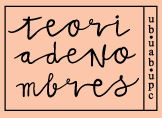STNB2025( 38a edició)
The power operation in the Galois cohomology of a reductive group over a number field
Ponents
Mikhail Borovoi
Resum
For a number field $K$ admitting an embedding into the field of real numbers $\mathbb{R}$, it is impossible to construct a functorial in $G$ group structure in the Galois cohomology pointed set $H^1(K,G)$ for all connected reductive $K$-groups $G$. However, over an arbitrary number field $K$, we define a *diamond* (or *power*) operation of raising to power $n$ $$(x,n) \mapsto x^{\Diamond n}: H^1(K,G) \times \mathbb{Z} ---> H^1(K,G).$$ We show that this operation has many functorial properties. When $G$ is a torus, the set $H^1(K,G)$ has a natural group structure, and $x^{\Diamond n}$ coincides with the $n$-th power of $x$ in this group.
For a cohomology class $x$ in $H^1(K,G)$, we define the period $per(x)$ to be the greatest common divisor of $n>0$ such that $x^{\Diamond n}=1$, and the index $ind(x)$ to be the greatest common divisor of the degrees $[L:K]$ of finite separable extensions $L/K$ splitting $x$. These period and index generalize the period and index a central simple algebra over $K$ (in the special case where $G$ is the projective linear group $PGL_n$, the elements of $H^1(K, G)$ can be represented by central simple algebras). For an arbitrary reductive group $G$ defined over a local or global field $K$, we show that $per(x)$ divides $ind(x)$, that $per(x)$ and $ind(x)$ have the same prime factors, but the equality $per(x)=ind(x)$ may not hold.
The talk is based on joint work with Zinovy Reichstein. All necessary definitions will be given, including the definition of the Galois cohomology set $H^1(K,G)$.
Fitxers
No hi ha fitxers per descarregar
